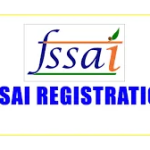As we know, the way we work is rapidly changing. Gone are the days of strict hierarchies and cubicle-filled offices. Instead, companies are adopting new ways of working that prioritize employee wellness, creativity, and flexibility.
Whether you’re on a job search, looking for your next opportunities or an executive eager to keep ahead of the curve, it will do you well to take note of the new trends.
Flexible Workplaces
Flexible workplaces are becoming more popular amongst employers and employees.
Some employers recognize the benefits of giving employees greater control over their work schedules and also decreasing their office space footprint. Companies can offer more flexible working arrangements without sacrificing productivity or quality.
In addition, flexible workplaces foster a culture of trust. Being trusted and empowered to manage their own time effectively, employees often become more engaged and motivated in their jobs.
Employees are better able to balance their personal and professional lives. Parents can pick up their kids from school without worrying about missing important meetings, or schedule meeting outside typical working hours. For many it saves hours of time traveling.
Though not all employers feel that working remotely is the answer. Martha Stewart claims that working remotely or even in a flexible situation will ultimately lead the U.S. to “go down the drain”. And Elon Musk has recently sent out an email to all his employees demanding they go back to the office.
Less Hierarchy in the Workplace
“In a hierarchy, every employee tends to rise to his level of incompetence.” – Laurence J. Peter, educator and “hierarchiologist”.
Gone are the days when a rigid hierarchy determined an employee’s value in the workplace. Companies will focus on a more horizontal organizational structure that promotes collaboration and empowers employees at all levels to contribute their ideas.
Open communication channels between managers and staff, allow for increased transparency and feedback loops. It is more likely for teams to work together towards shared goals, instead of relying on management at the top to make all decisions.
With less emphasis on titles and positions within the company, employees can feel more ownership over their work, boosting engagement and motivation. This approach creates opportunities for professional development as individuals take on responsibilities outside of their traditional roles.
Leaders who empower their teams with autonomy and trust foster an agile workforce that can respond quickly to shifting demands.
Embracing a flatter organizational structure is key to creating a positive company culture that values every team member’s contributions equally. It leads to higher productivity rates among employees who feel heard and valued by management while promoting innovation through collaboration across departments – something job seekers should look out for when looking for potential employers.
Emphasis on Staff Wellness
According to Dr. Steven Aldana, CEO of WellSteps, promoting staff wellness will significantly:
- Improve employee health behaviors.
- Reduce elevated health risks.
- Reduce health care costs.
- Decrease absenteeism.
- Help improve employee recruitment and retention.
One way companies are promoting staff wellness is by providing access to employee assistance programs (EAPs). These programs offer counseling services for personal or work-related issues, which can help reduce stress levels and improve overall well-being.
Another emerging trend is the incorporation of mindfulness practices into the workday. This can include meditation sessions, yoga classes, or simply encouraging employees to take breaks throughout the day to stretch and relax.
Many companies are also investing in ergonomic furniture and equipment designed to support good posture and prevent injuries caused by prolonged sitting or repetitive tasks. Standing desks, adjustable chairs, and wrist supports are just a few examples of items that can make a big difference in employee comfort levels.
Use of Digital Assistants
DA’s are becoming an essential part of everyone’s daily lives. The use of digital assistants is expected to increase drastically in the workplace making work more efficient and productive.
Scheduling meetings, sending emails, booking travel arrangements, and even managing your to-do list has become easier. By offloading these administrative tasks onto a DA, workers will be able to focus on more important tasks.
DAs can also help employees find relevant information quickly. With natural language processing capabilities improving each day, chatbots are becoming increasingly sophisticated in understanding user queries and providing appropriate responses.
Voice-activated devices allow employees to interact with technology hands-free while performing other activities like cooking or driving. This feature enables them to maximize productivity during commute time or while doing mundane chores.
Smarter Brainstorming
Brainstorming sessions were often dominated by a few individuals who had strong opinions, now, with equal brainstorming sessions, everyone’s thoughts and ideas will be valued equally.
liquidlearning.com explains: “When it comes to managing professional teams, maintaining a sense of cohesion and consistent productivity can be difficult. Especially if you’re dealing with remote or hybridized teams.”
One way to achieve smarter brainstorming is by using technology. Companies can use virtual whiteboards that allow employees to contribute their ideas simultaneously from different locations. Video conferencing sessions over online platforms like Zoom are also a good way to keep a visual brainstorming session alive.
Smarter brainstorming encourages participants to think outside the box or creatively. People are free to come up with wilder concepts that may ultimately lead to innovative solutions.
Also, a clear purpose is needed for each session so as not to get sidetracked from your goal. Effective communication skills play an integral role in achieving smart brainstorming outcomes.
Online Informal Get-togethers
For those who work remotely, online informal get-togethers have become a popular way for teams to connect and socialize.
Another advantage is that these events can help reduce stress and improve morale. Working remotely can be isolating for some employees, but having regular opportunities to socialize with coworkers can alleviate feelings of loneliness.
When planning an online informal get-together, it’s important to keep things light-hearted and fun. Team-building exercises or games can be a great way to break the ice and encourage participation from everyone involved.
Some examples of team building are virtual talent shows, online office games, trivia or mini competitions, introduce your pets, online gaming, happy hour, recipe sharing and team lunch, water cooler space (casual interaction), and team health challenges, to name a few.
Conclusion
In order to attract top talent and remain competitive, companies need to adapt and embrace new working patterns. From flexible workspaces to digital assistants, there are many exciting avenues to explore.
By prioritizing staff wellness, hosting online informal get-togethers, fostering smarter brainstorming sessions, and embracing a flatter organizational structure with less hierarchy in the workplace – while still maintaining company culture- organizations can create an environment that empowers employees to do their best work.
In this new era of work where change is constant but opportunities abound don’t forget your job search. Keep up with emerging trends like these as they could be key factors when looking for your next career path.
Lynn Martelli is an editor at Readability. She received her MFA in Creative Writing from Antioch University and has worked as an editor for over 10 years. Lynn has edited a wide variety of books, including fiction, non-fiction, memoirs, and more. In her free time, Lynn enjoys reading, writing, and spending time with her family and friends.














